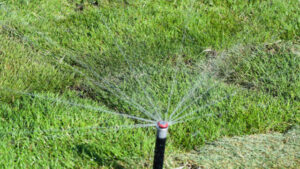Brochure10-5-2023rev1Columns written by Greg Grant and a Smith Co. Master Gardener which appear each Sunday on the Gardening page in the Tyler Morning Telegraph, are posted here.
Getting Down and Dirty in the Garden
Greg Grant, Smith County Horticulturist for the Texas A&M AgriLife Extension Service
featured in Tyler Morning Telegraph, July 14, 2024
Believe it or not, July is the time to plant cantaloupe (seed), cucumber (seed), eggplant (transplants), peppers (transplants), pumpkin (seed), squash (seed), and tomatoes (transplants) for a fall harvest in East Texas. Yes, I know it is hot and yes I know your garden is a mess. I do not make the rules, Mother Nature and the calendar do. If you like sweating and getting dirty, then now is your season. It is also a good time to improve your garden soil.
Plants need soil for their roots to grow in. The roots provide anchorage and absorb water and nutrients from the soil. There are different types of soil with different properties. It is best if you learn to identify them, so you will know what your strengths and weaknesses are. Only add amendments to your soil when you know why you are adding them. You may not need to add anything.
A few definitions are in order. All soils are made up of four types of substances in assorted proportions: minerals, organics, air, and water. All are essential to plant growth. Mineral soils are divided into three types, which are based on their particle size: sand, silt, and clay. Sand is comprised of large particles, which makes it drain extremely well, generally too well. Sandy soils dry out quickly and do not retain nutrients for very long, as they leach out with the water as it is draining. They are easy to work, however. Sandy soils are often described as loose or light. Clay is comprised of very small, flat, slippery particles that do not drain very well but do hold fast to nutrients and water. They are very difficult to work and cultivate. Clay soils are often described as tight and heavy. Clay soils tend to stick to your shoes and tiller and dry into large clods or “bricks.” Silt is comprised of medium-sized particles with intermediate characteristics between sand and clay. Loam soils have equal portions of sand, silt, and clay, and they are ideal for gardening as they provide the benefits of each. Most vegetable gardeners prefer a sandy loam soil. These ideal soils are often referred to as friable, crumbly, and loamy—they all mean the same texture.
Describing the ideal soil and owning the ideal soil are completely different things. The best way to improve your soil is with the addition of organic matter. Organic matter improves the moisture- and nutrient-holding capacities of sandy soils, and it improves the drainage, aeration, and workability of clay soils. Without air, roots cannot take up nutrients and plants will be stunted or even die from root rot. Organic matter can come from home compost piles made from decayed leaves, grass clippings, and kitchen scraps, or it can be purchased as compost, mushroom compost, composted cotton seed hulls, composted hardwood bark, or composted black pine bark. Never let any organic matter go to waste. Non-composted organic matter, such as leaves, hay, grass clippings, rice hulls, pine bark, wood chips, and pine straw, can be placed on top of the ground where it will prevent weeds, retain moisture, and keep the ground cooler in the summer and warmer in the winter. As it decomposes, it improves your soil.
If you do not have the heart to get into your garden now, basil, beans, garlic, and multiplying/gumbo/winter onions get planted in August, then all the cool season veggies in September. Time waits for no one.
Greg Grant is the Smith County horticulturist for the Texas A&M AgriLife Extension Service. He is the author of Texas Fruit and Vegetable Gardening, Texas Home Landscaping, Heirloom Gardening in the South, and The Rose Rustlers. You can read his “Greg’s Ramblings” blog at arborgate.com and read his “In Greg’s Garden” in each issue of Texas Gardener magazine (texasgardener.com). More science-based lawn and gardening information from the Texas A&M AgriLife Extension Service can be found at aggieturf.tamu.edu and aggie-horticulture.tamu.edu.
Common Sense Watering For Hot Summer Months
By: Katy Barone, Smith County Master Gardener
featured in Tyler Morning Telegraph, July 14, 2024
 There’s every reason to believe water is a big deal for Texas. Texas is growing in population, industries and big tech companies are moving here increasing the need for water. The climate is hotter and drier according to Dr. David Creech, Director of SFA Gardens at Stephen F. Austin University. Another factor for the water shortages are the recent droughts of 2022 and 2023 contributing to the drying up the state’s water supplies of lakes, wells, and underground aquifers.
There’s every reason to believe water is a big deal for Texas. Texas is growing in population, industries and big tech companies are moving here increasing the need for water. The climate is hotter and drier according to Dr. David Creech, Director of SFA Gardens at Stephen F. Austin University. Another factor for the water shortages are the recent droughts of 2022 and 2023 contributing to the drying up the state’s water supplies of lakes, wells, and underground aquifers.
Watering deeply and infrequently encourages plunging root growth and drought tolerance. The roots go deeper to get water to survive the Texas heat. The most efficient method to water trees is by soaker hose or drip irrigation allowing the water to filter slowly into the root zone, slowly reducing water evaporation. Do not water trees at the trunk but at the drip line, the area at the outer edge of the plant’s branches. Most of the fine roots that take up moisture are several feet from the trunk. Excessive watering at the trunk can contribute to pest and disease problems.
Water in the early morning when temperatures are cool to minimize evaporation and the wind is calm. The most limiting factor for tree growth and overall health is water and watering wisely is the best way to conserve our precious water resource and to benefit all our trees according to the Texas A&M Forest Service. Drought can weaken trees, making them more susceptible to pest and disease issues.
Lawns are the largest irrigated crop in our landscapes according to Robert “Skip” Richter, Brazos County Horticulturist at Texas A&M AgriLife Extension Service. A mist or fine sprinkler system only gets the tops of the leaves of grass. The roots will be shallow and will not go deep. It is the roots that need the water and not the leaves of grass. Use a low-angle sprinkler that produces large drops of water close to the ground, helping to reduce evaporation. Adjust your sprinkler to water only the lawn and not the house, sidewalk or street. Water in the morning or evening when temperatures are cool. Don’t water your lawn on windy days. Automatic sprinkler systems can provide an efficient method of irrigating lawns because controllers turn the system off after a predetermined amount of time, so a measured amount of water can be applied. Watering 1 inch per week is adequate according to Greg Grant, Smith County Horticulturist at Texas A&M AgriLife Extension Service. One way to determine the rate at which your sprinkler applies water to your lawn is to:
- Set out 3 to 5 empty tuna cans in a straight line going away from the sprinkler. Set the last can near the edge of the sprinkler’s coverage.
- Run the sprinkler for a set time such as ½ hour.
- Measure the amount of water in each can.
- Each can will contain a different amount of water. Usually the can closest to the sprinkler will have the most water. The sprinkler pattern must overlap to get an even wetness of the soil. Use this information to find out how long it takes your sprinkler to apply 1 inch of water. For example, if you find that most cans contain about ¼ inch of water after the sprinkler runs ½ hour, it would take 4×1/2 or 2 hours to apply 1 inch.
Texas is a great state, but our water shortages are having a serious impact on our economy and quality of life. It’s up to every Texan to do our part now, be responsible with water and help us all.
The Smith County Master Gardener program is a volunteer organization in connection with the Texas A&M AgriLife Extension Service.
Linda Thomas
Smith County Master Gardener


